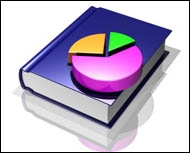Choosing the right education measures requires an ongoing, open dialogue that considers both what the American people want to know and what experts consider most important for them to know.

Public participation in this dialogue is strongly encouraged, in keeping with State of the USA's commitment to openness, inclusiveness and transparency.
Elliott, a member of the State of the USA Editorial Committee, organized his draft set into a five-category framework. How complete is this picture? What education measures do you consider "key? Help shape progress in education with your ratings and comments below.
Competencies | Education-related Behaviors | Elementary and Secondary Institutions | Post-secondary Institutions | U.S. Population Engaged in Education
Selection Process, Audience Participation
The independent, nonprofit State of the USA works with the National Academy of Sciences to identify sets of "key" indicators in areas of civic concern, following a formal selection process. (See our Editorial Policies).These focused, manageable sets -- out of hundreds of health indicators, 20 have been identified as "key" -- represent what leading subject-matter experts ultimately determine to be essential for tracking progress in a given issue area.
While awaiting the results of that formal process issue by issue, experts such as Elliott help generate discussion by sharing what they consider to be vital measures in their particular field of expertise, along with a framework for thinking about the issue as a whole. The State of the USA audience is encouraged to offer opinions and observations along the way.
Elliott's Rationale
The list is "structured to emphasize education as a life-long pursuit, in which many experiences both in and outside of school have important influences," Elliott explains.
"Individuals develop their own ways of pursuing education at different stages of life, and these would be captured in the categories for education-related behaviors and for engagement in education. Yet the focus of education policy and of public and private investment is our educational institutions, at all levels. This dimension of education would be reflected in the framework categories for elementary and secondary and for higher education institutions," Elliott explained.
The resulting framework is similar to many current indicator sets, including the National Center for Education Statistics' Condition of Education report, and the list of individual indicator measures would have many in common with those found in the Organization for Economic Cooperation and Development's Education at a Glance.
"Current writing about education data seems divided between those who would continue assessment of school subject learning as the primary outcome, and those who seek to represent out-of-school experiences and conditions that influence readiness for learning as well as activities that continue to nurture learning," said Elliott.
"That current writing also includes proposals for a broader spectrum of in-school measures--for example, the arts, physical education, opportunities for collaboration, opportunities to learn and practice critical thinking and problem solving skills."
The framework and sample measures were created to recognize the latter interest, at least in part, he said.
 |
Competencies |
Sample Measures and Sources: |
School Subject Proficiency
Early reading and math achievement Sources:
National Assessment of Educational Progress scores Sources: International assessments Sources:
AB and IB courses passed at college acceptance level Sources:
'Soft Skills' Communication/ problem solving/ critical thinking skills, collaboration, ability to work in groups, technical skills (computer, network), motor skills Sources:
College Level Learning College level learning (e.g., CLA) Sources: Credentials Credentials earned including diplomas, certificates, licenses, associate and higher degrees; trends in degrees by field Sources:
Adult Learning Levels Sources: |
E-mail Feedback: Education Measures
 |
Education-related Behaviors |
Sample Measures and Sources: |
Engagement and Motivation
Engagement in learning, homework, student effort (absenteeism), student preparation, risky behaviors, enrollment in AP and IB courses Sources:
Persistence and Progress Persistence in school and college, dropouts, transitions to college and international comparisons Sources:
Continuing Education Experiences Education in the workplace, online courses; books, other reading; civic engagement Sources: TBD |
E-mail Feedback: Education Measures
 |
Elementary and Secondary Institutions |
Sample Measures and Sources: |
Finance
Revenues, expenditures per pupil; revenue effort, use of funds Sources:
Teachers Teacher qualifications (in-field teaching), pay Sources:
Environment School environments and differences in experiences available to diverse population groups (e.g., availability of AP, IB), environment, school crime, parent and student attitudes, bullying, safety Sources:
Innovation Innovation (availability of charters, pay reform, alternative routes for staffing, technology, etc.) Sources: Remedial Enrollments in College Sources: |
E-mail Feedback: Education Measures
 |
Post-secondary Institutions |
Sample Measures and Sources: |
Finance
Expenditures and revenues trends, public and private non-profit and for-profit Sources: Faculty Faculty tenure, adjuncts, teaching time Sources: Affordability Affordability,, debt burden of graduates Sources:
Accountability Accountability information for the public Sources: TBD |
E-mail Feedback: Education Measures
 |
U.S. Population Engaged in Education |
Sample Measures and Sources: |
Enrollments in Educational Institutions
Educational enrollment at all levels, including adult Sources:
Education Experiences Before School Preschool experience in the home, and enrollments in preschool programs Sources:
Continuing Education Experiences Participation in online courses, education in the workplace Sources: TBD |
E-mail Feedback: Education Measures
 Print This
Print This RSS Feed
RSS Feed